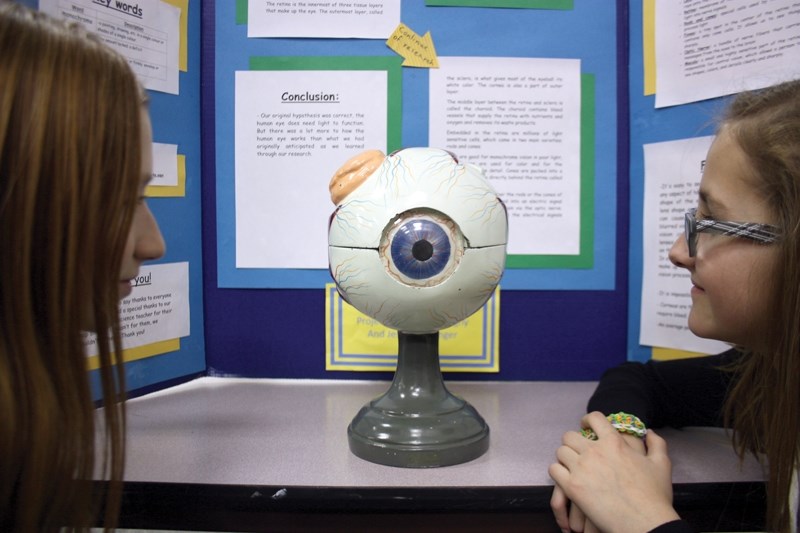The Westlock Regional Science Fair saw inquisitive young minds from across the county gather at the Westlock Community Hall March 6 to share their results.
And in many cases the results, and the experiments from which they were derived, offer some fascinating insight into our everyday lives.
Grade 3 students Heleena Neuman and Sage Sekulich, from Busby Elementary School, looked into how much glucose there is in different kinds of fruit — inspired by Neuman’s recent diabetes diagnosis.
“If you’re diabetic, you can make choices that are best for you,” Neuman said.
They blended 10 grams of a dozen different types of fruit combined with 90 millilitres of water to make a slurry, which they then tested for glucose using a product called Diastix.
And the results?
A ripe banana is chock full of glucose, whereas lime is on the lowest end of glucose content. Anyone, diabetic or otherwise, can use this information to make informed choices about how to deal with low blood sugar.
“If you have the overripe banana you would have fast energy, but if you have the lime you get slower energy,” Sekulich explained.
On the other side of the food spectrum, Grade 6 students Curtis Plamondon and Achielle Boraski from Westlock Elementary School compared some of the local fast-food burgers available in Westlock.
“We wanted to know how long it would take for them to mold,” Plamondon said.
What they learned by putting burgers from Ramzi’s, A&W and McDonald’s in sealed containers for two weeks was that sometimes your assumptions going into an experiment get blown away. As it turns out, none of the hamburgers developed any mold at all.
“None of them molded, but the interesting thing we found out is they shrunk,” he said, attributing the change to loss of moisture.
But would they eat the hamburgers despite no mold growing on them?
“No way, it would be too hard and too disgusting,” Plamondon said.
Jason Wiks, who teaches high school social studies at the Alberta Distance Learning Centre, was judging the competition for the third time and said he’s always impressed with the kinds of projects he sees.
“It’s always surprising how much work the kids put into it and how well they do,” he said.
“There’s clearly a lot of thought that goes into it, they’re definitely starting to learn about the scientific process, they can speak intelligently about things like variables.”
As for the educational value of taking part in this kind of an exhibition, Wiks said it goes well beyond the specifics of any particular project.
“Education is about confidence, and this is one of those things that we hope the students build confidence through this whole process,” he said.
“That’s one of the key pieces to this whole thing.”



